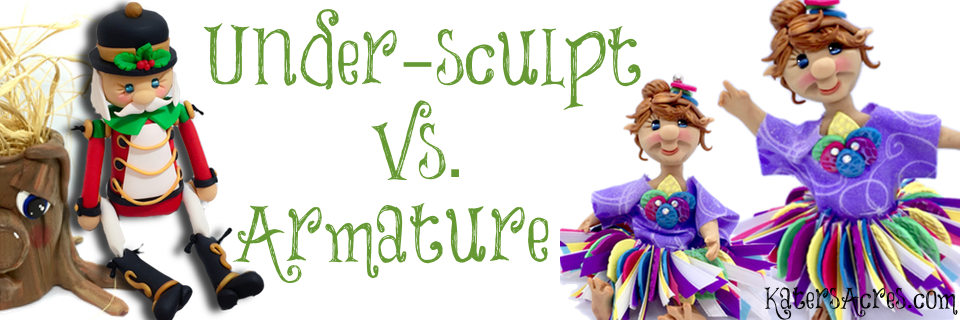
If you are new to sculpting, you know that there’s a wide variety of things you still have to learn. Understanding the difference between an under-sculpt and an armature may be at the top of your list, or it may be at the bottom. Regardless, at some point in your sculpting world, you may find that the two of these ideas collide and you find yourself either needing to know the difference or needing to know how to execute to two. Under-sculpts and armatures are often easily confused. Today I hope to clear up some of the confusion and help you better understand the difference between an under-sculpt and an armature.
Before we can discuss the difference between two things, it often helps to know what something is first. Let’s be clear, there are many who do NOT differentiate these two classifications. I do because it is easier for me to explain to my students and to help them learn the basics of sculpting. So, without further ado, let’s discover together …
What is an Armature
At its core, an armature is the basic building blocks of a piece; often foil or wire covered with foam, paper, or other materials at the artists’ discretion.

An armature than adds bulk to your piece, allowing you to “beef up” the size and proportion of your design, without affecting the exterior design components. Your armature will never been seen and is hidden beneath the exterior of your piece.
A true doll will have a wire armature, often covered in Polyfil, and uses fabric to finish the doll (like my Pixie Doll); this makes the doll gently posable as well. A unique and wonderful feature. This ability to continuously pose a sculpture at whim is often what makes doll making such an inspiring and desirable hobby to so many.
What is an Under-sculpt
 At its core, an under-sculpt is what is used to give your figure movement and shape beneath it’s final layer.
At its core, an under-sculpt is what is used to give your figure movement and shape beneath it’s final layer.
This means that an under-sculpt goes over an armature. [It does not necessarily have to if your figure does not require an armature.] An under-sculpt will be used to give your figure movement, shape, detail, and proportion that may not otherwise be as easily achieved on a single, top layer of clay.
Your under-sculpt will show-thru to the exterior layer of clay or design element. It is an intentional placement of a feature used to enhance the finished piece.
Mr. Stumpy (shown at left) has both an armature and an under-sculpt. His armature is what gives him his basic shape and structure. However, it is his under-sculpt is what gives him his personality, as the roots are shaped on top of the armature. His roots while being essential to his shape and form, are not part of the top layer of the design. His under-sculpt was done so that his roots and tree proportions looked as though they were coming out from the stump itself and not a separate component of the tree. See the tutorial on how to do this here.
I hope that this brief discussion helped you to better understand the difference between an under-sculpt and an armature. If you have any further questions regarding the difference between an under-sculpt and an armature feel free to ask them in the comments below.
Thanks for joining me today,



 At its core, an under-sculpt is what is used to give your figure movement and shape beneath it’s final layer.
At its core, an under-sculpt is what is used to give your figure movement and shape beneath it’s final layer.
Hey Katie, I’ve been having a problem with cracking during baking lately. I have wrapped the wire armature and aluminum foil core with masking tape but still am having cracking occasionally. I was wondering if I used paper clay as a core it might help in the expansion problem with metal armatures. Also I’m not sure how well polymer clay works and plays with paper clay as a base.
There can be MULTIPLE problems that cause this unfortunately and getting to the bottom of it is never easy. If you’re doing what I suggested earlier, then here’s the second most common reason:
Are you baking in stages or just baking all at once? The easiest and quickest solutions is usually to bake in stages and to use thinner layers. So think in terms of baking an armature FIRST and THEN finishing your piece and baking with your finished outer sculpt. The problem is usually moisture & gases in the clay that can’t escape. The outside of the clay bakes or “firms up” before the inside. Then when the inside swells and causes the firm outside to “crack.”
And lastly (which I’m sure you already know and are doing): With the change in weather, often our ovens are not as reliable. In the winter my studio is MUCH colder, thereby I have to bump up my oven temperature by 15 degrees to bake at the SAME temperature it normally does. I would carefully monitor your oven temperature to be sure it is stable. Frequent fluctuations in temperature also cause cracking in a HUGE way.
See if these two things help. If not there are some other things we can try for you.